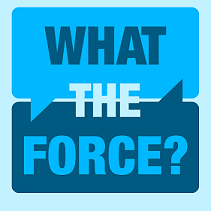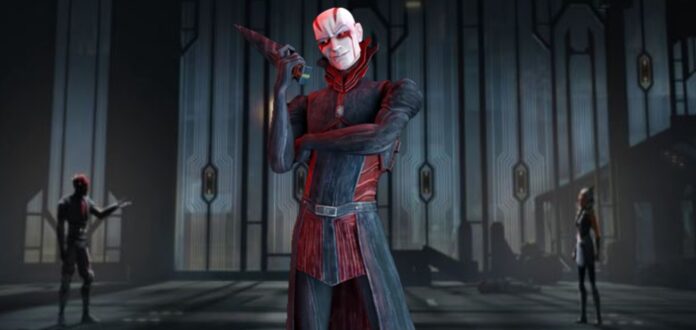Can the light exist without the dark in a Galaxy far far away? In my opinion… no. In Star Wars, we are consistently presented with the duality of light and dark, life and death, as it cycles through the ebbs and flows of the story. In Star Wars, there will always be a push and pull of opposite forces.
One advocates for our soul, connecting us with compassion, and another tempts us to take the quick and easy path. We see this dynamic play out in the throne room of Star Wars: Return of the Jedi, where the focus of the temptation is Anakin. He is the one brought together with his compassionate and loving son Luke and the eternal devil of Star Wars, Palpatine.
This is paralleled in one of Star Wars’ most powerful storylines, The Clone Wars episodes set in Mortis. In this mystical planet, part of the world between worlds, Anakin, Ahsoka and Obi-wan encounter three powerful manifestations of the Force: the Father, Son and Daughter, which try to guide Anakin to use the Force in three distinctly different ways. The Father pushes Anakin to take over his role controlling the Son and Daughter, the dark and the light aspects of the Force. Star Wars asks most of its main characters to fill this role, to find their way through, to bring balance.
This three-sided balance appears repeatedly in classic moral mythology and in the Star Wars mythopoeia. The Star Wars protagonists often have a literal angel and devil on their shoulders, pulling them in opposite directions. One pulls them to the light, and one to the dark, with the main character, and the viewer, at the very center.
In the Mortis arc, the Father metaphorically represents the path of balance that the hero must traverse. This path is not right for Anakin at that moment, but eventually, in Return of the Jedi we see him complete — he does what the gods of Mortis predicted.
The archetypes of Mortis are expanding past that of Anakin’s journey. In a key scene, Anakin uses the spirit of the Daughter of Mortis to resurrect Ahsoka. Representing both a rebirth of Ahsoka and a continuation of the mythology of the Force gods of Mortis we see Ahsoka take on the mantle of a key figure in the Star Wars Galaxy from that point on: the Daughter, who dies so that Ahsoka can live.
Ahsoka is established as having a special destiny, saved from death twice in the animated show. The first time was when Anakin resurrects her on Mortis, and the second when Ezra saved her through the World between Worlds. Her fate – to die, to disappear from the story — changed in both occasions.
In Rebels, Ahsoka’s new role fits that of a Light side guide — associated with the Daughter — complete with her very own spirit guide, the owl-like Morai. This name is reminiscent of the Moirai of Greek Mythology, or the “three fates”, and Morai fulfills her role as a watchful companion to Ahsoka.
Dave Filoni also confirmed Morai’s connection to the Daughter of Mortis:
“In some ways, I could say that it’s a messenger, it’s an observer. It is definitely something. And… I would rather have fans debate—but I would suggest… that whatever that thing is an avatar of has actually appeared in the animated Star Wars universe before. So decrypt from there.”
Goldman, Eric (2016-03-30). [Star Wars Rebels: Dave Filoni on Ahsoka’s Fate, Maul’s Return and Much More. IGN. Archived from the original on January 3, 2020.]
At the end of Rebels, Ahsoka appears to have taken on another form: Ahsoka the White, as she has been nicknamed by the fandom. This transformation or ascension to another state would reflect her becoming more like the Force Goddess known as the Daughter. Dave Filoni spoke on how her transformation was in part inspired by the transformation that Gandalf goes under in The Lord of the Rings, from Gandalf the Grey to Gandalf the White.
Now, the question is… if Ahsoka is the light side of the Force, the angel on the shoulder of the protagonist of the day, then who is Ahsoka the White’s counterpoint in the Force: who represents the Son of Mortis? Who is Ahsoka’s Balrog?
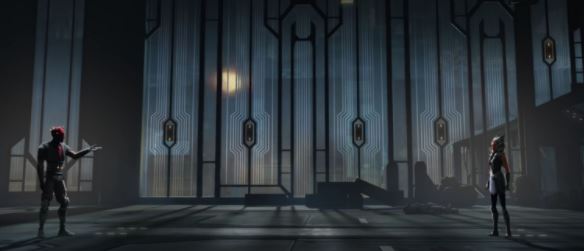
Birds and Snakes
From a physical perspective, both birds and snakes lay eggs, which are universal symbols of birth, creation and potential power. The bird and the serpent embody depictions of birth from a mythic perspective; renewal and regeneration as birds moult and snakes shed their skin.
Both birds and snakes act as messengeres between the realms of Earth, Heaven and Hell — and they participate in sacred stories as key go-betweens for spiritual leaders and heroes.
The Owl: the Morai 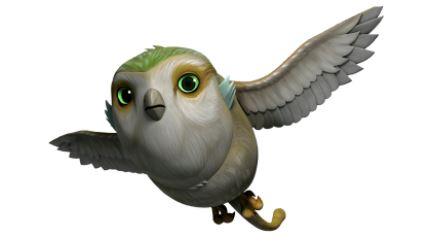
In many mythologies, owls are symbols of wisdom, omens of death, and oracles. Birds themselves transcend our realm and can go-between the heavens and the earth. Birds often guide souls and carry messages back and forth between the spiritually awakened and the spirit world.
The Snake: Morley 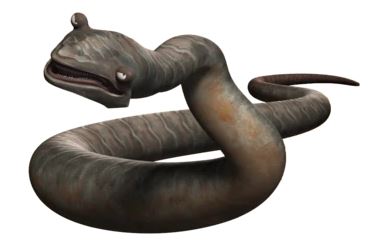
Snakes are also connected to spiritual travel because they were regularly regarded as workers of the Underworld or messengers between the Upper and Lower worlds… mostly because they lived in cracks and holes in the ground. They are still associated with trickery and temptation — just like the Son of Mortis, and Maul’s tricks to get to power.
Additionally, Maul carries with him the mark of a snake on his face; a tattoo under his mouth with fangs and a forked tongue.
Mythical Life and Death
One of the truths of the Star Wars universe is that there is no light without the dark; the Force has both. The Yin Yang / Light Dark of Star Wars is an archetypal representation in the planet of Mortis, and the two children-aspects of the Force are the Son and the Daughter.
We have seen Ahsoka live, starting to fulfill a new role as Ahsoka the White, a light side guide and mentor. However, we don’t have or aren’t aware of the other half of the balance, the darkness and decay of the universe that allows the eternal cycle of life and death to ebb and flow, to have peaks and valleys.
Even in Rebels, we see their pictorial representation continue this flow of duality – the Daughter opens the doorway. The Son closes it. This is similar to the rhythm of ocean tides. A metaphor for the Yin and Yang and flow. You cannot have one without the other.
That’s where mythical comparisons can assist us. Both Ahsoka and Maul have been touched mythically by spirit animals that can in mythology move between the realms of the underworld — the bird and the snake. We see how though introduced to each other for the first time Ahsoka and Maul .
For Ahsoka, the Daughter of Mortis was present when she died and came back to life. Morai, the owlet that represents the Daughter, also appeared to show Ezra how to pull Ahsoka out of the duel with Vader, saving her from death and pulling her into the world between worlds.
On the other hand, it was a snake, Morley, who saved Maul’s life in the hellish planet of Lotho Minor, feeding him small creatures and sustaining him in a tomb-like cavern until he could be reborn on Dathomir.
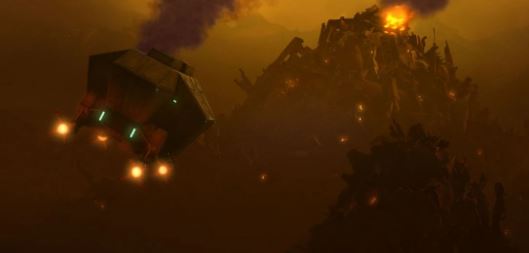
Eternal Battles
At the end of the final season of Star Wars: The Clone Wars, Ahsoka and Maul duel. Ahsoka saves Maul from falling to his death, and eventually, aboard the ship back to the Republic when Order 66 strikes, Ahsoka enlists Maul to do what Maul does best: “Cause chaos.” Order and chaos lean into a duality that we consistently see in Star Wars.
In the second season of Rebels, Maul and Ahsoka meet again and share an uncomfortable elevator ride (perhaps a conversation) and a battle on Malachor so rancorous that it hints that there’s more story to tell about these two in between the two shows.
By the end of both The Clone Wars and Rebels, Maul has been established as Ahsoka’s opposite. And, incidentally, if they have A History, it would perfectly fit the timeline of the four live-action Star Wars shows that are currently in development: The Mandalorian, Kenobi, Cassian Andor and The Bad Batch.
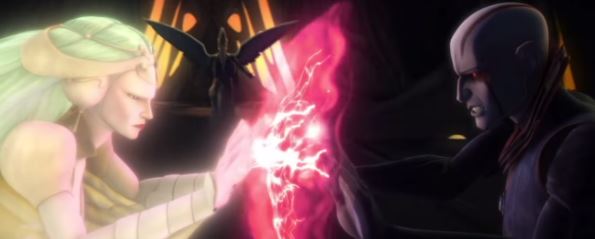
But… Maul is dead… right?
As seen in the Rebels episode Twin Suns, Obi-Wan defeated Maul. He even held his old enemy the Pietá position — an emotional, empathic end to long struggles and suffering.
We have already seen the end of Ahsoka – she should have died in Mortis and on Malachor in the confrontation with Vader. Maul should have died when Obi-Wan defeated him on Naboo in Star Wars: The Phantom Menace.
Sisyphus’ Eternal Pain
Sam Witwer and Freddie Prinze Jr. have both talked about Maul being Sisyphus, eternally frustrated, eternally struggling and eternally suffering. In the IGN’s installment of Watch From Home Theater The Empire Strikes Back, Sam Witwer said this about Maul.
“I don’t know if we were conscious of this at first, but the whole thing with Maul is that he’s a villain whose thing is he does not learn from his mistakes. He makes the same mistake every time. He’s just trying. ‘Well, if I do it harder. More angry. If I can push my way through this.’ Like in Greek mythology, he’s Sisyphus. He rolls the boulder up the hill, and then he stumbles at the last minute and it rolls down the hill, and he rolls it back up again, and he does that for eternity.”
Can someone who is like Sisyphus ever truly die? Dying — and getting to finally rest and be at peace with the universe — would defeat the point of suffering for all eternity.
Death isn’t the end; it’s merely a transformation
No one is ever truly gone, especially when they still have work to do or balance to achieve. The balance of the Force, having only one Force god exist alone, is in contradiction to the way Dave Filoni and the team have talked about the force. Energy can not be created or destroyed; only transformed. Ahsoka is still out there, but we are missing the avatar of death and decay in the galaxy.
My hypothesis is that Maul isn’t gone. Instead, he has transformed into an avatar of the dark side of the Force, just like Ahsoka has taken on that of the mantle of the light. If this is the case, Maul’s character will no longer be ‘evil’ but a primal version of the dark side of the Force — closer to the Son of Mortis than to Anakin or Dooku, a god of darkness necessary to keep the balance in the Galaxy.
In Star Wars, darkness is a necessary death god. Death and decay are essential for the Galaxy, or we can’t have new life. Obi-wan’s compassionate killing of Maul in Rebels will lead to his final transformation into a more permanent fixture in the Star Wars mythos. Because how can you become the God of Death without dying? This theory even works from a behind-the-scenes perspective: the actor that voiced both Maul and the Son of Mortis was Sam Witwer.
So, does Maul live? Maul lives! We need a devil to tempt us, to offer enough paths so that we can find our own. In Rebels, as Ezra Closes the portal to the world between worlds, he hears this:
“The future, by its nature, can be changed.” in the Son’s voice.
The Future (and the future of Star Wars) needs the mythic, the story needs duality, light and dark, so that it can have an internal balance. One can not exist without the other. And, if Ahsoka is back — as the rumour mill currently has it — so will Maul grace the Galaxy once again.
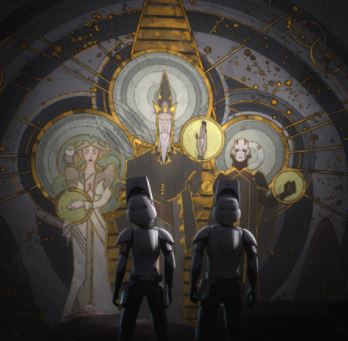
Additional Listening: The Way of the Force: Elsewhere

